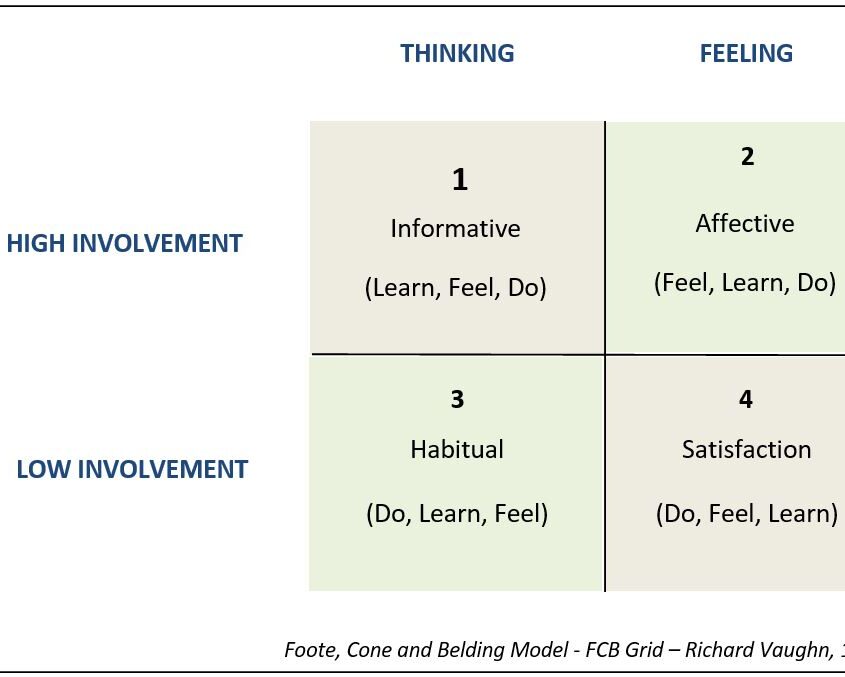A Second Look At The Sermonic Form
A Second Look At The Sermonic Form
In the last post we saw how advertisers develop an ad in order to touch on our involvement with the product they are seeking to sell. We then applied that to the sermonic form, or the way our sermons unfold. In this post we are going to take a second look at the sermonic form that you use for your sermons.
A Second Look at the FCB Grid
Recall that we looked at the grid below as part of the last post. I give it to you again here. to refresh your memory.

Let’s apply this grid to reality. I’m looking for a used car. In that process, I go on a variety of sites that sell cars both locally and across the country. There are certain ads for an automobile that focus on quadrant 1. They focus on things that are high involvement, or a high value in my choice. The things that I consider are things like: how much does it cost? What is the safety record? Is it reliable for the long haul.
 There are other ads, thought that are Affective. They appeal to my sense of personhood. Those ads try to make me think that I’m going to “feel” better when I’m in the car. People will think I’m important. These cars make me believe that some people will think better of me if I’m in this particular kind of car. The focus would be on the flashy features of the car.
There are other ads, thought that are Affective. They appeal to my sense of personhood. Those ads try to make me think that I’m going to “feel” better when I’m in the car. People will think I’m important. These cars make me believe that some people will think better of me if I’m in this particular kind of car. The focus would be on the flashy features of the car.
Low involvement decisions are things those that engage us less. These decisions require less engagement. For instance, I could just decide that I am going to purchase one kind of car because I always buy Toyota Corollas.
Satisfaction purchases are engaged because these are the things that bring me satisfaction. This kind of advertising offers loyalty programs so that I don’t have to really make a decision.
The Second Look At The Sermonic Form
You may have learned as you studied preaching that you need to include the head, heart and hands in your presentation. When you take a second look at the sermonic form that you usually use (and if you’re honest, you do have a default form), you find this helpful in your next message.
The High Involvement Message
Some messages will introduce new thoughts to your hearers, and will seek to convince people to think differently so that they will act differently. These sermons, especially including theological concepts, will need to have a good intellectual appeal.
The Low Involvement Message
There are other sermon subjects that will require little intellectual involvement on the part of your hearers. These messages, especially those that are encouraging your hearers to change their behavior or encourage behavior changes that they are making, will more likely focus on an emotional response. Such sermons will use more stories and testimonies and appeal to the emotions more than the intellect.
Thinking Back
So, what form do you usually use for your messages? Think about this a bit. In a staff meeting in my last church we were discussing this as we reflected on my recent messages. One staff member perceptively pointed out that I do have an outline in my mind when I preach. And he was able to identify it. That’s not necessarily bad. It just means that your preaching will be more impactful if you vary the form depending on the subject of your message.
Conclusion
In the next post we’re going to look at another sermonic form that advertisers use that might be helpful to you as you seek to bring form to your message that will impact your listeners.



